Warm Up Your Kars Garden: Creating Microclimate Zones
Ready to transform your Kars garden into a thriving oasis, even with Ottawa's tricky climate? Understanding microclimates is your secret weapon. Need help identifying these zones or implementing changes? Request a free quote today!
Quick Takeaways: Microclimates Explained
- Microclimates are small pockets in your yard with slightly different weather conditions (temperature, sun, wind, moisture) than the surrounding area.
- Identifying microclimates allows you to extend the growing season, protect tender plants, and choose plants suited for specific spots.
- Factors creating microclimates include sun exposure, structures (walls, fences), elevation, soil type, and wind patterns.
- You can enhance or create warmer microclimates using techniques like dark mulch, raised beds, windbreaks, and strategic placement near heat-absorbing surfaces.
Introduction: Kars, Let's Turn Up the Heat (In Your Garden!)
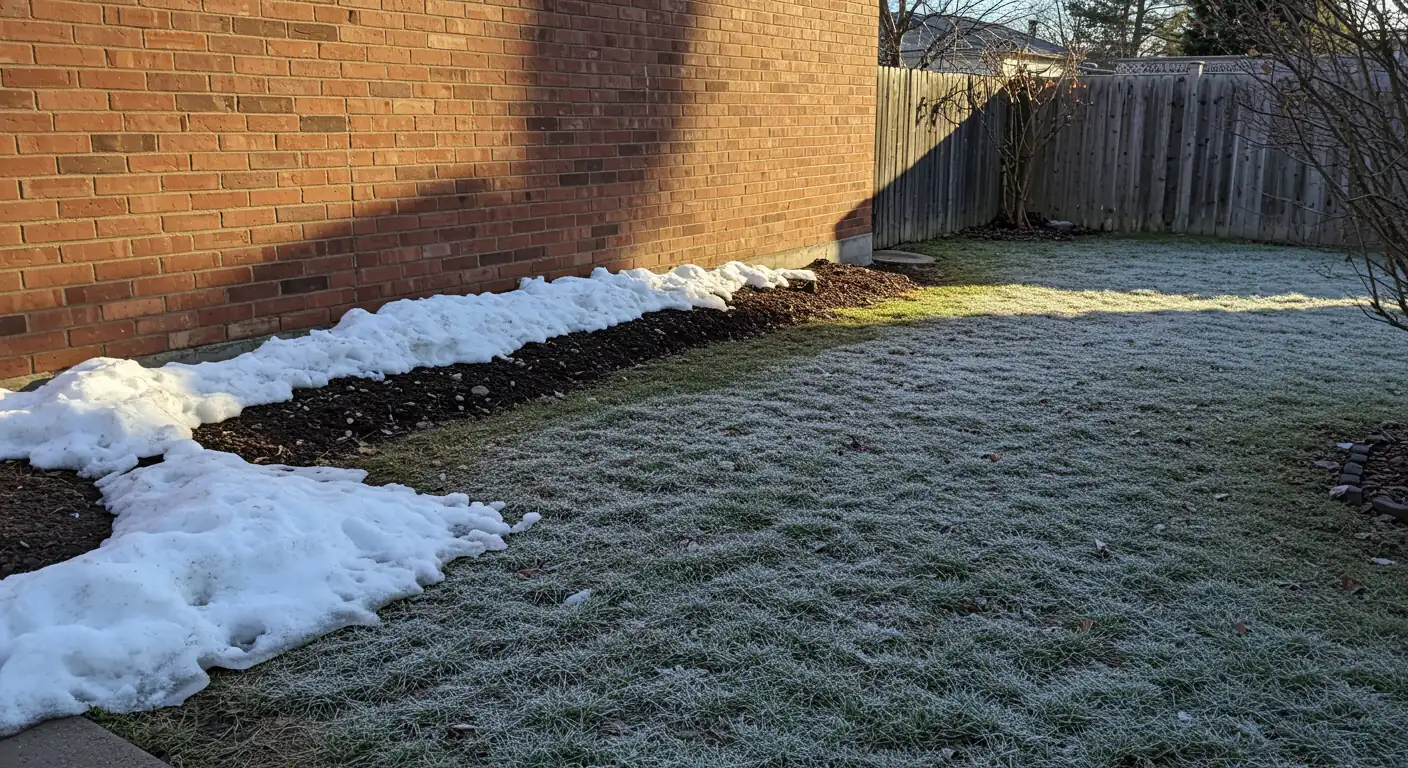
Hey there, Kars neighbours! Ready to get your garden sizzling this year? Let's face it, gardening around Ottawa can sometimes feel like a race against the frost, giving us a shorter growing season than we'd like. But what if I told you there's a clever way to bend the rules a little, right in your own backyard?
We're talking about microclimates. It sounds a bit scientific, maybe, but the idea is wonderfully simple! Think of your yard not as having just one big climate, but as a patchwork of tiny little weather pockets. That sunny spot right against your south-facing brick wall? It’s like a mini heat-trap! The sheltered corner protected from the wind by a fence or hedge? That's another special zone. Even the type of soil and how much moisture it holds can create different conditions just feet apart. Considering professional soil preparation can optimize these conditions.
Understanding these mini-zones is like having a secret advantage for your landscaping and gardening efforts, especially here in Kars and surrounding areas like Manotick or Osgoode. By finding and using these microclimates wisely, you can:
- Extend your growing season slightly.
- Give tender plants a bit more protection.
- Successfully grow varieties that might normally struggle in our broader climate zone.
- Choose the perfect plant for the perfect spot.
So, grab your gardening gloves! Let’s explore how to identify these hidden hotspots (and cool spots!) and use them to turn up the heat – and the success – in your beautiful Kars garden.
Decoding the Ottawa Chill: Understanding Your Starting Point
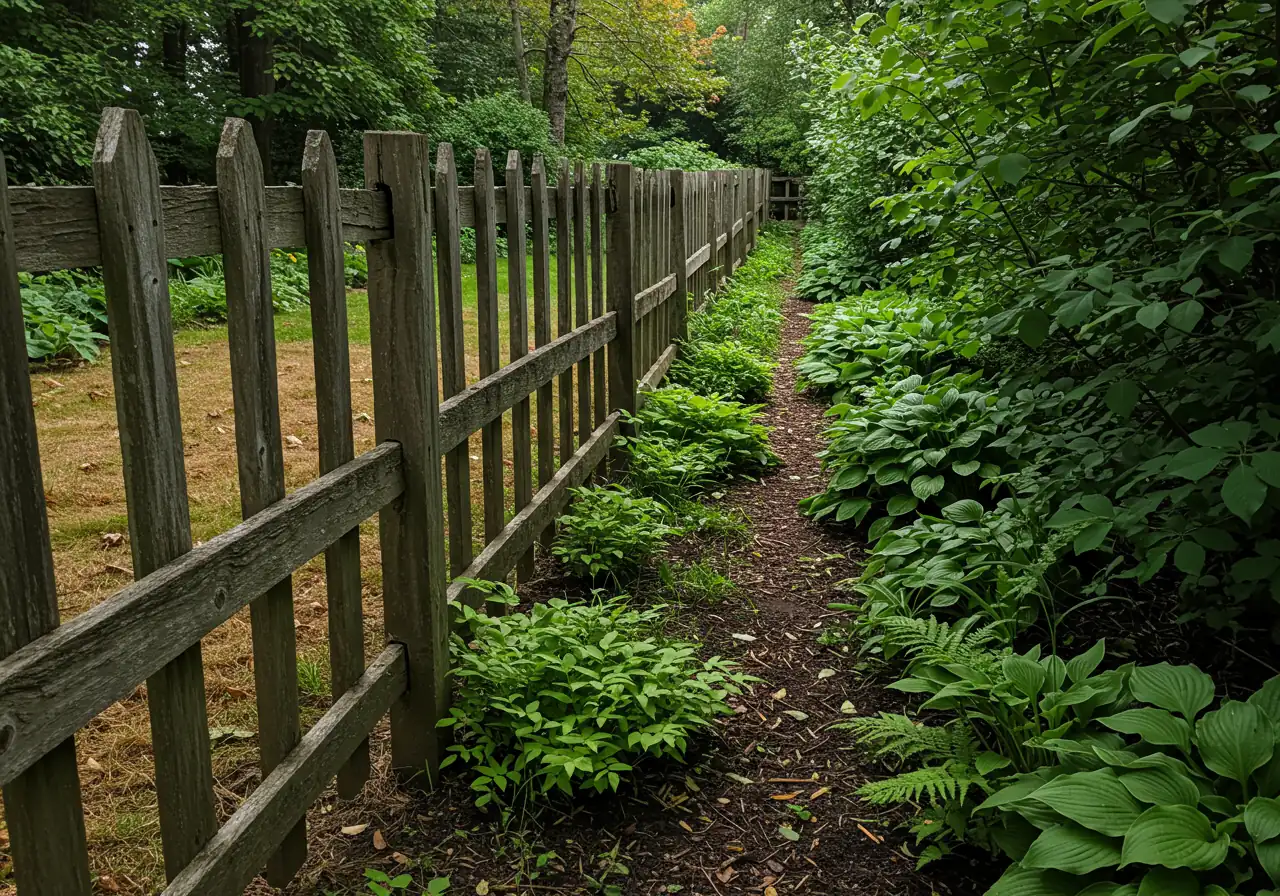
Okay, let's talk about gardening in Ottawa. If you've lived here a while, you know our weather likes to keep us on our toes! Officially, most of the Ottawa area sits in Plant Hardiness Zone 5a or 5b (You can find more details on zones from resources like Natural Resources Canada). What does that mean in plain English? It means our winters get really cold, and our official growing season – the time between the last spring frost and the first fall frost – can feel frustratingly short. One minute you're planting seedlings, the next you're wondering if you need to cover them up again! It’s the classic Ottawa chill we know and... well, we garden through it!
But here's where it gets interesting: your backyard probably isn't exactly Zone 5a all over. Remember those microclimates we mentioned? Think of them as tiny little climate pockets scattered around your property, each with slightly different conditions than the overall neighbourhood. Understanding these is key to successful gardening because they explain why some plants thrive in one corner of your yard and sulk in another.
So, what creates these mini-zones? Several things are at play:
- Your Soil: The dirt beneath your feet plays a huge role! Heavy clay soil, common in some areas like parts of Manotick, holds moisture differently and heats up slower than sandy soil. This can significantly affect which plants feel at home. Dealing with drainage challenges in clay? You might find inspiration in creating specific solutions like rain gardens; check out these tips for Manotick rain gardens and clay soil drainage.
- Location, Location, Location: Even within the broader Ottawa region, things vary. A garden in breezy, more rural Kars might face different wind and temperature patterns than one in a more developed area like Barrhaven, which might benefit slightly from the 'urban heat island' effect (where buildings and pavement retain heat). Different locations might even inspire different gardening projects or techniques. For instance, a slightly warmer pocket might allow you to explore creative Barrhaven spring espalier garden art techniques on a sunny wall. Keeping track of what works where is vital – a simple notebook can be your best friend, just like suggested in this handy Kars garden summer record-keeping guide.
- Your Yard's Layout: This is a big one! A south-facing wall soaking up sun will be much warmer than a shady spot under a big maple tree. Fences, hedges, sheds, and even neighbouring houses create windbreaks and distinct shade patterns, influencing both temperature and moisture levels right down to the soil.
Getting to know your specific microclimates starts with observation. Pay attention! Where does the snow melt first in spring? Where do puddles linger after a good rain? Which spots seem protected from the wind, and which get battered? Taking note of these details helps you make smarter choices, putting the right plants in the right spot for better landscaping results. Regular walkabouts are essential, almost like performing seasonal check-ups. Think along the lines of conducting Nepean fall garden health checks to see how different areas of your garden performed and what needs attention before winter.
Pro Tip: Use a simple outdoor thermometer placed in different spots for a few days to get actual temperature readings. You might be surprised by the variations!
Feeling a bit overwhelmed by decoding your yard's unique personality? Don't worry, that's perfectly normal! Sometimes a bit of professional help can make all the difference in understanding your property's potential and tackling tricky spots. Whether it's identifying microclimates, choosing the perfect plants, designing a new garden bed, or getting a major seasonal cleanup done, exploring professional landscaping and gardening services can give you a great head start. For instance, if you're in Manotick and the thought of prepping your garden feels daunting, consider getting help from a dedicated Manotick property cleanup service to set the stage for success.
Your Garden Detective Kit: Finding Microclimate Hot Spots
Okay, time to put on your detective hat and grab your metaphorical magnifying glass! Finding those special little microclimate pockets in your Kars or Richmond yard isn't complicated – it mostly just takes a bit of observation. Think of yourself as Sherlock Holmes, but instead of solving crimes, you're solving your garden's climate mysteries! Here’s your kit for finding those garden goldmines:
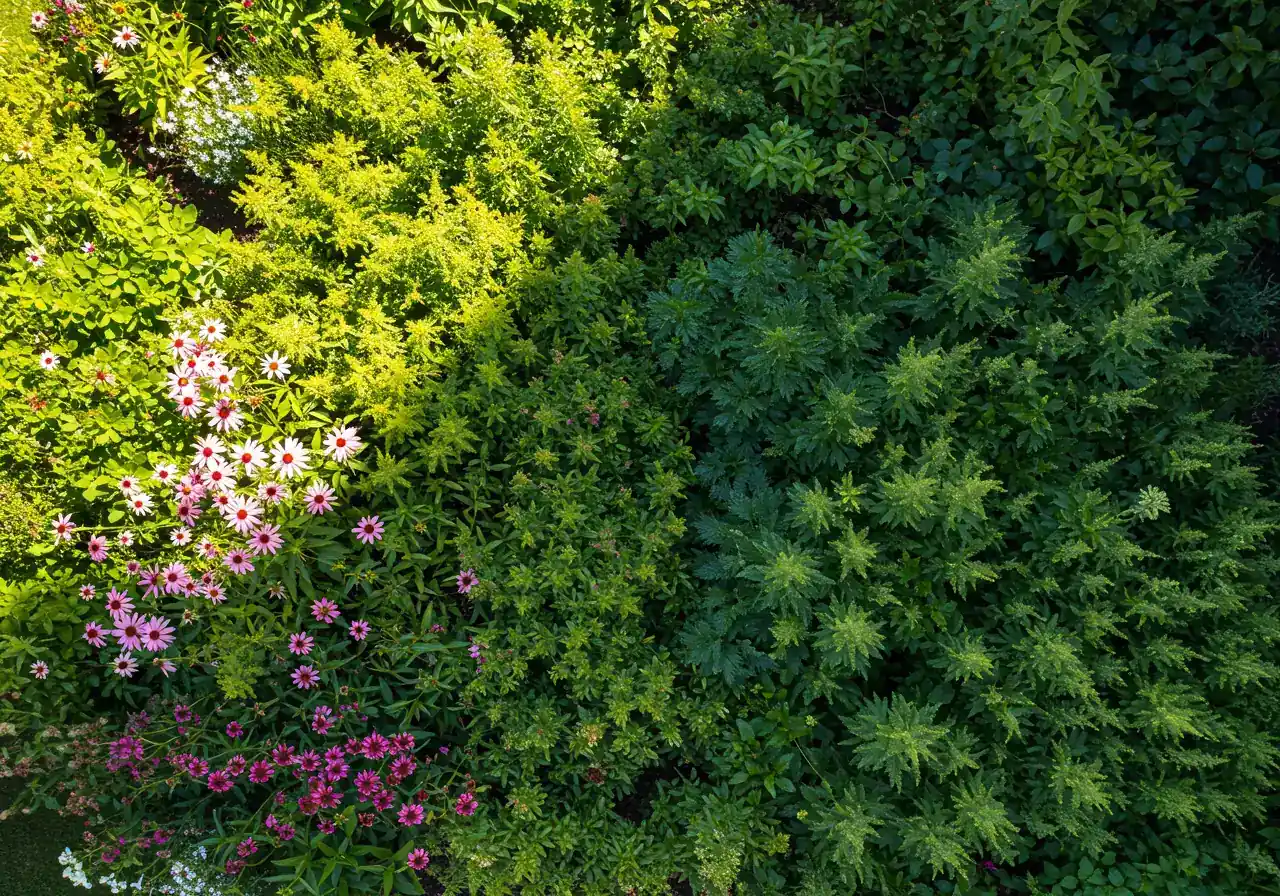
1. Your Trusty Eyes (and maybe a notebook): The Sun Tracker
This is your most important tool! Over a few days (and ideally, at different times of the growing season), watch how the sun moves across your yard.
- Where does the sun hit first thing in the morning? (East-facing spots)
- Where does it bake in the afternoon? (South and west-facing areas are usually the warmest). A brick wall facing south can act like a radiator!
- Where is it shady most of the day? (North-facing spots, or under dense trees).
- Action Tip: Sketch a simple map of your yard and mark down the sunny and shady zones at different times (say, 9 am, 1 pm, 5 pm). This helps visualize the heat map. Remember, intense afternoon sun can stress some plants, while others thrive on it. Local resources like the Friends of the Central Experimental Farm often have workshops on understanding local conditions.
2. Your Ears (and Feeling): The Wind Whisperer
Wind can seriously cool things down and dry out soil and plants. Pay attention on breezy days.
- Which areas feel noticeably windier? (Open spaces, corners of the house).
- Which spots feel sheltered? (Behind fences, hedges, sheds, or even dense shrubs). These protected nooks often stay warmer.
- Action Tip: Notice where snow drifts pile up in winter or where leaves gather in fall – these are clues about prevailing wind directions. Planting tender perennials in a spot sheltered from harsh Ottawa winds can make a big difference. If a potential spot is cluttered, getting it ready might involve clearing out debris – a task sometimes handled by a Ottawa property cleanup service if you need a hand.
3. Your Feet: The Elevation Expert
Even subtle changes in height matter.
- Are there low spots where water tends to collect after rain? These areas might stay cooler and moister.
- Are there slight rises or berms? Higher ground often drains faster and can be a bit warmer and drier.
- Action Tip: Walk your yard after a good rain. Where are the puddles? Where does the water run off? This tells you about moisture and potential cool/warm spots. Managing these differences is part of good landscaping.
4. Your Surroundings Scanner: Structure Clues
Look at the non-living things in your yard.
- Walls and Fences: As mentioned, south/west facing walls absorb and radiate heat. Fences block wind.
- Pavement: Driveways, patios, and walkways soak up heat and reflect it onto nearby plants, creating warmer, drier zones.
- Buildings and Large Trees: These cast significant shade, creating cooler microclimates.
- Action Tip: Feel the temperature difference near a sunny wall versus under a large maple tree on a warm afternoon. The contrast can be significant! Preparing areas near structures might require specific attention, perhaps even needing a comprehensive Ottawa garden clean up service to properly define the space.
5. Your Moisture Meter (or just your finger!): The Water Watcher
Check the soil in different spots a day or two after watering or rain.
- Where does the soil stay damp longer? (Likely shadier, lower, or heavier clay soil areas).
- Where does it dry out super fast? (Sunny, windy spots, or areas with sandy soil or near heat-reflecting surfaces). This can impact needs for effective lawn care too, as some patches might dry out faster than others.
- Action Tip: Dig down a few inches. Is it consistently moist or surprisingly dry? Match water-loving plants to damp spots and drought-tolerant ones to drier zones. This targeted approach simplifies regular garden maintenance. If you're noticing large areas that are consistently messy or overgrown while doing these checks, remember that specialized help like a yard cleanup service, like those available in Marionville, can tackle big jobs.
By playing detective and combining these observations, you’ll start seeing your yard not as one uniform space, but as a fascinating mosaic of mini-climates. This knowledge is power, helping you choose the right plants for the right spots and boosting your gardening success right here in the Ottawa area! And remember, understanding your obligations when hiring help for these tasks is important; you can review examples of service agreements via resources like our terms and conditions. Happy sleuthing!
Identifying & Using Warm Zones
Warm microclimates are typically found in south or west-facing locations, near heat-absorbing surfaces like brick walls, dark fences, or pavement. They get the most direct sun, especially afternoon sun. Snow melts here first in spring.
Use For: Heat-loving vegetables (tomatoes, peppers), herbs (basil, rosemary), tender perennials, early spring bulbs, potential 'zone-pushing' experiments.
Identifying & Using Cool Zones
Cool microclimates are often on the north side of structures, under dense trees, or in low-lying areas where cold air settles or moisture persists. They receive less direct sunlight.
Use For: Shade-tolerant plants (hostas, ferns, astilbe), woodland natives, lettuces and spinach (less likely to bolt), moisture-loving plants (ensure drainage is adequate).
Identifying & Using Sheltered Zones
Sheltered microclimates are protected from strong winds by fences, hedges, buildings, or dense plantings. These spots experience less wind chill and moisture evaporation.
Use For: Plants sensitive to wind damage (tall flowers, delicate foliage), slightly less hardy plants needing winter protection, creating cozy seating areas. Vital for areas needing dedicated property cleanup like in Metcalfe to establish clear, protected zones.
Building Warmth: Techniques to Create Cozy Garden Corners
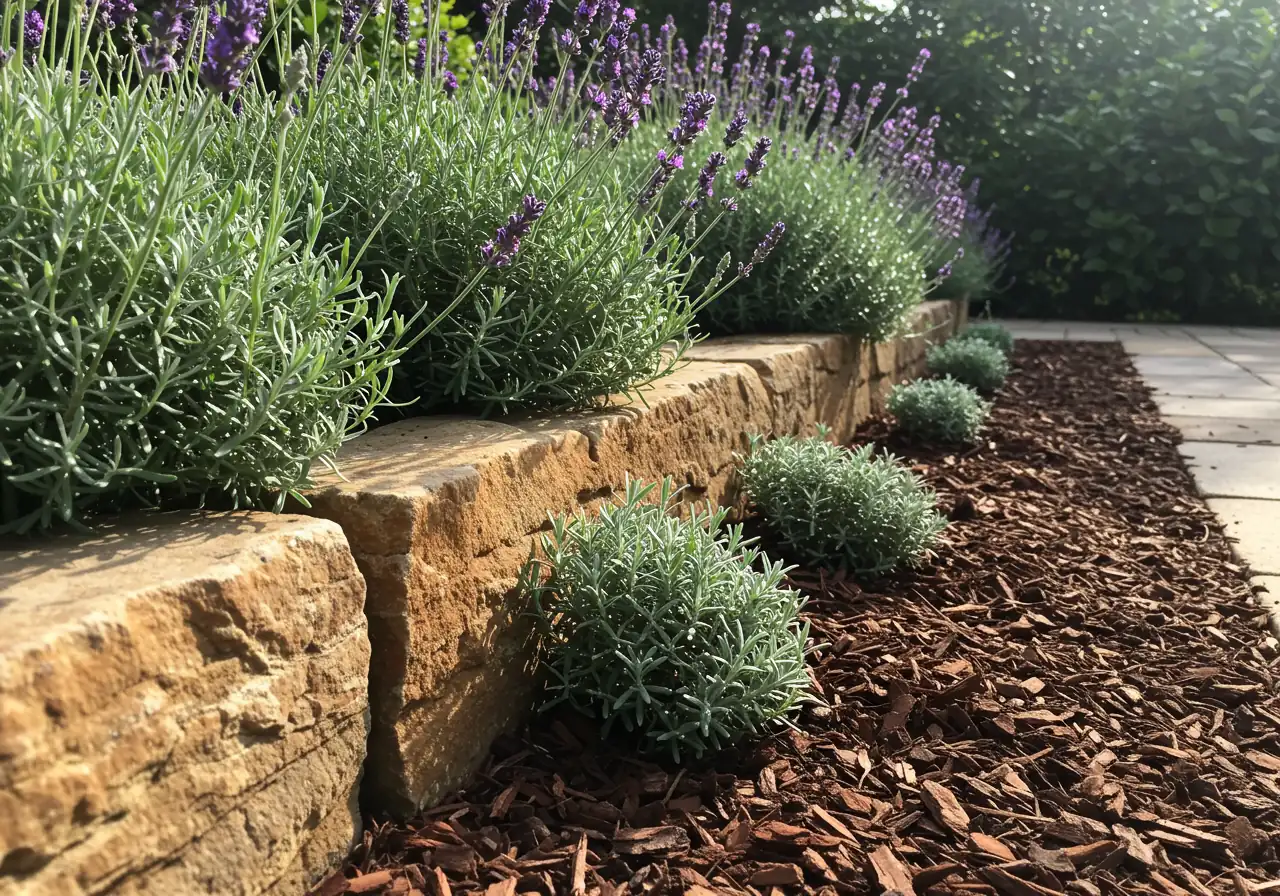
Alright, so you’ve played garden detective and found the naturally warmer nooks in your yard. Awesome! But what if you want to create even more cozy corners or give Mother Nature a helping hand, especially with our sometimes nippy Ottawa climate? Good news! You absolutely can turn up the heat (just a bit!) in specific spots using some clever gardening and landscaping tricks. Let's explore how to build little pockets of paradise that can extend your growing season and protect delicate plants.
1. Structural Savvy: Walls, Fences, and Raised Beds
Think of structures as your garden's radiators and windbreakers.
- Solid Walls & Fences: A south or west-facing solid wall (brick, stone, even a dark-painted wooden fence) is brilliant. It absorbs the sun's heat during the day and slowly releases it back at night, warming the nearby air and soil. This "thermal mass" effect can be a game-changer, especially in areas like Manotick where incorporating stone elements into landscaping is popular. Building a new structure? Great! Just ensure the area is ready; sometimes a thorough Ottawa property cleanup service is needed before construction begins.
- Raised Beds: Filling raised beds with good quality soil often means they warm up faster in the spring than the ground-level garden. If the sides are made of stone or dark materials, you get that thermal mass benefit too! Plus, they offer excellent drainage.
- Cold Frames & Mini Greenhouses: These are fantastic for extending the season at both ends. They trap solar heat and protect plants from frost and wind. You can buy kits or build your own simple versions.
Choosing Your Structure: Consider creating a simple comparison in your garden journal: list options like 'Stone Wall', 'Dark Fence', 'Raised Bed'. Then compare factors like 'Cost', 'Warmth Boost (Low/Med/High)', 'Effort to Install', and 'Looks'. This helps visualize the best fit for your space and budget. Remember, any significant change might involve preparing the site first, which could range from minor tidying to needing a full property clean up.
2. Going Natural: Strategic Planting
Your plants themselves can be warmth warriors!
- Windbreaks: Planting dense hedges or rows of shrubs/trees can significantly reduce wind chill, creating sheltered, warmer zones behind them. This is especially useful in more open, potentially windier areas like Osgoode or Greely. Evergreen hedges provide year-round protection. Eco-Tip: Choose hardy, native species that are well-suited to our Ottawa climate – they’ll establish faster and support local wildlife like those recommended by the Rideau Valley Conservation Authority. Clearing space for a new hedge might require some initial work; if you're facing a large amount of brush or debris, a city yard cleanup service can make short work of it.
- Groundcovers: Dense, low-growing groundcovers can act like a living mulch, helping to insulate the soil and reduce temperature fluctuations.
3. Water Works Wonders
Believe it or not, water features can subtly moderate temperature.
- Ponds & Water Barrels: Large bodies of water absorb heat slowly and release it slowly. A strategically placed pond (especially a dark-bottomed one) can slightly warm the surrounding air, particularly overnight. Even dark-coloured rain barrels placed in the sun can absorb and radiate some warmth. Eco-Tip: Rain barrels also conserve water – a win-win!
4. Soil Secrets & Surface Smarts
Don't underestimate the ground beneath your feet!
- Dark Mulch: Using dark-coloured mulch (like dark shredded bark or compost through services like mulching and edging) helps the soil surface absorb more solar heat, warming the root zone faster in spring.
- Stone & Gravel Paths: Similar to walls, dark stones or gravel used for paths or patios near planting beds absorb heat and radiate it back. Be mindful this can also dry out adjacent soil faster. Preparing these areas often starts with clearing existing vegetation or debris, a task sometimes handled by specialists, like a Marionville property cleanup service if you're in that specific area. Consider careful material selection for these features.
- Clear the Clutter: Removing excessive leaf litter or debris from a spot you want to warm up allows the sun to reach the soil directly. A general Ottawa yard cleanup service can help get these spots ready each spring.
Estimated Temperature Boost from Techniques
Note: Values are estimates and vary greatly based on specific conditions.
By layering these techniques, you can create surprisingly effective warm pockets in your garden. Experiment, observe, and enjoy coaxing a little extra warmth into your Ottawa landscape! And rest assured, reputable service providers respect your privacy; you can review details on how data is handled, for instance, via our privacy policy.
Planting for Success: Making the Most of Your Microclimates
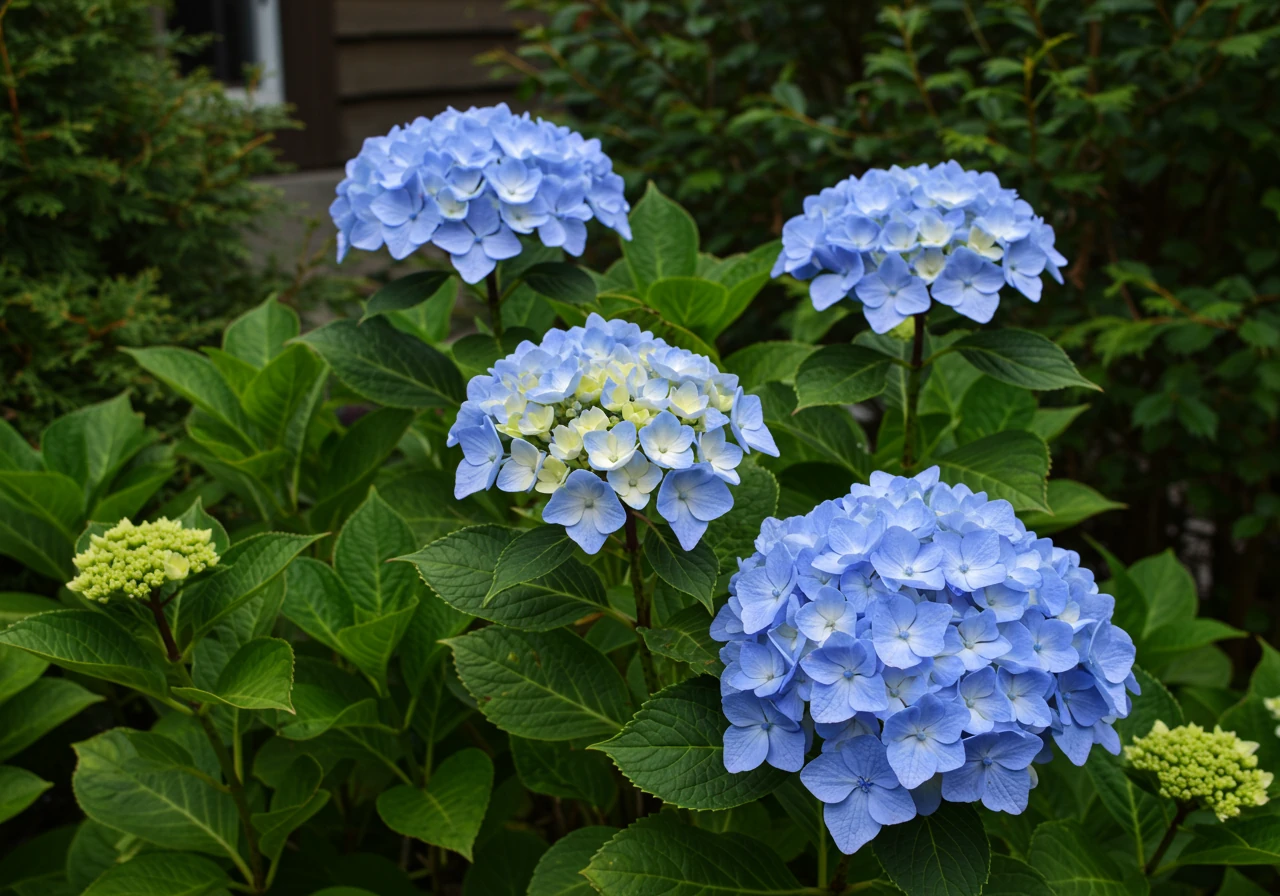
Okay, garden adventurers, you've scouted your territory, maybe even built a cozy corner or two. Now for the really fun part: choosing the plants! Knowing your microclimates is like having a secret weapon for successful gardening. Instead of just hoping for the best, you can match plants to the spots where they'll truly thrive. Think of it as garden matchmaking!
Got that sun-baked spot against your south wall in, say, Nepean? That's prime real estate for heat-loving beauties that might otherwise shiver through our typical Ottawa spring. Found a nook perfectly sheltered from the wind? It could be ideal for something a little more delicate. The key is observation: pair sun-lovers with sunny spots, shade-tolerant plants with cooler areas, and keep moisture levels in mind.
This is where the idea of "zone pushing" comes in – trying plants rated for a slightly warmer zone (like Zone 6) in your warmest microclimates (Zone 5). Now, let's be realistic: we're not suddenly creating a tropical paradise in Kars. Ottawa winters are still Ottawa winters! But in a really well-protected spot, you might get away with:
- Certain Japanese Maples: Some varieties are borderline hardy here. A spot sheltered from harsh winter wind and extreme temperature swings gives them a fighting chance.
- Bigleaf Hydrangeas (Hydrangea macrophylla): Known for their stunning pink or blue blooms, these often struggle with flower bud hardiness in Zone 5. A warm microclimate can sometimes help protect those precious buds for a better show.
- Some Tender Perennials: Think specific varieties of Lavender or Coral Bells (Heuchera) that appreciate extra warmth and excellent drainage.
Zone Pushing Caution: Zone pushing is always a bit of a gamble! Be prepared for potential losses after a harsh winter. Consider it a fun experiment rather than a guarantee. Protect these plants well in fall.
Before you start planting these ambitious choices, make sure the spot is perfectly prepped. Sometimes this means tackling more than just digging a hole. If you're clearing out old shrubs or debris to make way for your new star plant, a thorough Property Clean Up might be the first step. For specific areas needing attention, like getting a garden bed ready near Metcalfe, considering a specialized Metcalf Garden Clean Up Service ensures the space is truly ready. We believe in doing the job right – you can learn more about our approach on our About Us page or see what others think on our Google My Business reviews.
A Simple Seasonal Calendar Idea:
Think about how your microclimates affect timing:
Early Spring (April-May)
Warmest spots (south-facing walls, raised beds) might be ready for planting hardy annuals or heat-loving veggie starts (tomatoes, peppers) a week or two earlier than exposed areas. Soil warms faster here.
Mid-Summer (July-August)
Hottest microclimates (near pavement, full sun) may need more frequent watering. Cooler, shadier spots become refuges for plants stressed by heat.
Early Fall (September-October)
Plants in sheltered, warm spots might resist the first light frosts, extending the season for blooms or harvests. This is crucial for late-ripening crops.
Late Fall (October-November)
Focus winter protection (mulching, wrapping) on borderline plants located in the most favorable microclimates for better survival chances.
Managing expectations is key. Microclimates offer subtle advantages, not miracles. Sometimes, large-scale preparation is needed across different parts of the city; that's where a comprehensive City Property Cleanup Service can be invaluable for setting the stage. Planning these projects? We value transparency and input; check out how we handle Estimate Feedback to ensure client satisfaction.
So, use your microclimate knowledge wisely! Place your plants strategically, experiment a little if you feel adventurous, and enjoy the rewards. Have questions about preparing your specific garden spots? Don't hesitate to Contact Us – we're always happy to chat about getting your garden ready for planting success!
Quick Wins: Microclimate Magic Cheat Sheet
Okay, let's boil it down! Feeling like you need the cheat sheet version of harnessing those little weather pockets in your yard? You got it! Here are some quick wins to make microclimate magic happen, Ottawa style:
Quick Wins: Microclimate Magic Cheat Sheet
Want faster ways to boost your garden’s mojo without needing a degree in meteorology? Here’s your cheat sheet – simple tricks for busy Ottawa gardeners!
- Hug a Sunny Wall: Got a south or west-facing wall? Bingo! That's prime real estate. Keep the base clear of clutter so it can absorb maximum sun and radiate heat back to nearby plants. A focused cleanup can make all the difference; sometimes a dedicated City Garden Clean Up Service is just the ticket for prepping these valuable spots.
- Block that Breeze: Wind steals warmth and moisture. Use existing fences, plant a hedge, or even arrange containers strategically to create sheltered nooks. Less wind means happier, warmer plants. These protected zones are often the stars in stunning Garden Transformations.
- Go Dark for Warmth: Spread dark mulch (like compost or dark bark chips) or place some flat, dark stones around heat-loving plants. They act like mini solar panels, absorbing sunlight and gently warming the soil.
- Matchmaker, Matchmaker: Put the right plant in the right spot! Heat-lovers go in your sunniest, warmest zones. Shade-tolerant varieties tuck into cooler, shadier areas. Getting the placement right is crucial – if you're planning a new bed, expert Garden Install services ensure plants start off in their ideal microclimate.
- Rethink Struggling Lawn: Notice that patch by the driveway in Barrhaven that fries every summer, no matter how much you water? It's a hot microclimate! Instead of fighting it with grass seed, consider drought-tolerant perennials there. Focus your Sod Installation efforts on areas with more suitable, moderate conditions.
- Clear to Conquer: Sometimes the best potential microclimates are hidden under overgrown weeds or yard debris, especially on larger properties or areas bordering public spaces. Identifying and utilizing these might first require tackling the clutter; for significant cleanups involving neglected areas, a comprehensive Metcalf yard cleanup service can clear the way for planting.
There you have it! A few simple adjustments can make a surprising difference in your gardening success. Happy planting!
Kars Garden Q&A: Your Microclimate Questions Answered
Got questions about those mini-weather zones in your Kars garden? You're not alone! Understanding microclimates can feel like unlocking a secret level in gardening. Here are answers to some common queries we hear from fellow Ottawa area green thumbs, perfect for our FAQ section.
Absolutely! Tomatoes love heat. Planting them in your sunniest spot, especially against a south or west-facing wall that radiates warmth, can make a big difference. Ensure the area gets maximum sun exposure; sometimes clearing overhanging branches or clutter is needed. For bigger prep jobs before planting, like clearing an old garden patch, a specialized service like a Metcalf Garden Clean Up Service can get the space ready for heat-loving plants.
Think dark! Applying a layer of dark mulch, like compost or dark bark chips, helps the soil absorb more solar energy. Even placing dark-coloured containers strategically can boost warmth. Keeping the area clear of weeds and debris also allows the sun to hit the soil directly. Proper mulching and edging not only looks neat but using dark mulch adds that little thermal advantage for your plants.
Yes, rocks act as thermal mass – they soak up heat during the day and release it slowly at night, buffering temperature swings near the soil. This is great for heat-loving plants. Just be aware rocks don't add organic matter and can make the surrounding area quite dry. When planning your landscaping, careful material selection like choosing rocks versus organic mulch is key for matching the spot's needs.
It sure does! Darker, richer soil tends to absorb more heat and warm up faster in the spring sunshine than lighter-coloured soil. Sandy soil heats up and cools down quickly, while heavy clay soil (common in some Ottawa areas!) takes longer to warm up but holds moisture differently. These factors directly influence which plants will feel most at home in different parts of your garden. Excellent soil preparation is key.
Wind is a major microclimate player, especially in open areas like around Osgoode! It steals warmth from plants and soil (wind chill is real for plants too!) and dries them out faster. A windy spot will generally be cooler and require more watering than a sheltered one, significantly impacting your growing season. Even a simple hedge or fence can create a calmer, warmer pocket behind it. Tackling overgrown areas to establish windbreaks might require some prep, akin to the work done by a Marionville Garden Clean Up Service in preparing sites.
Yes, to a degree! Spots near the house foundation, under overhangs, or sheltered by dense shrubs tend to stay slightly warmer overnight as heat radiates from structures or is trapped. These areas might escape the first light frosts that nip plants in more exposed locations, giving you a few extra days. Combining a warm microclimate with a floating row cover offers even better protection. We hope these tips help your Kars garden thrive; for more info or to get in touch, please visit our Thank You page!
Conclusion: Embrace Your Kars Garden's Full Potential
Well, Kars and Ottawa area gardeners, we've journeyed through the secret world hiding right in your backyard – the mighty microclimate! It sounds fancy, but as we've seen, it’s really your garden's secret weapon against our sometimes challenging local climate. Understanding those warm spots by the wall, the sheltered nooks safe from wind, and even how your soil warms up differently isn't just interesting garden trivia; it’s how you unlock your gardening superpowers!
Think of the possibilities: extending your growing season just a tad, giving tender plants a fighting chance, or finally succeeding with that special flower your friend in Greely thought wouldn't survive here. By matching plants to their perfect mini-zones, you move from guesswork to smart gardening. This knowledge is key to creating stunning, thriving landscaping that works with your specific yard, not against it. Don't let these hidden pockets of potential go unnoticed!
Feeling inspired but maybe a little overwhelmed about applying all this? No worries! If you'd like help mapping your yard's unique spots or choosing the absolute best plants for each microclimate, consider reaching out for a personalized consultation. Explore our landscaping and gardening services, serving Kars and the wider Ottawa region, including areas like City garden maintenance and Ottawa yard cleanup. Ready to take the next step?

